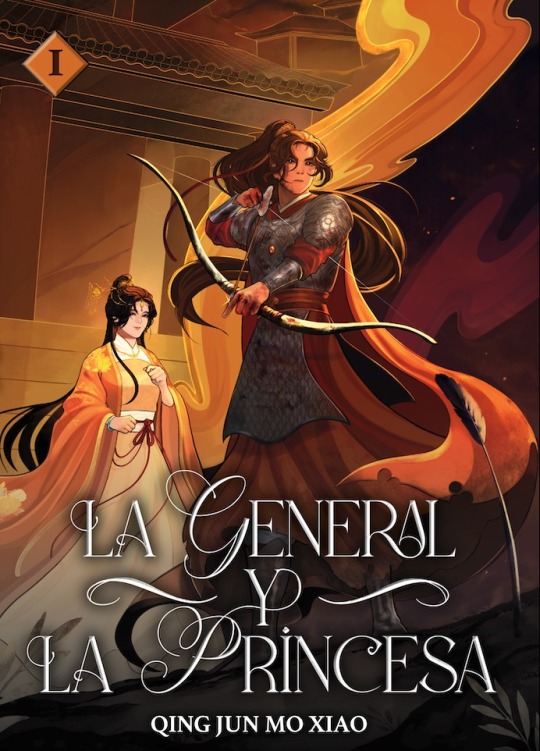#matrilocality
Explore tagged Tumblr posts
Text
Skeletons unearthed in Dorset contained DNA evidence that Celtic men moved to live with their wives' families and communities. Scientists found evidence of a whole community built around the female line of a family over generations, probably originating with one woman. "This points to an Iron Age society in Britain where women wielded quite a lot of influence and could shape its trajectory in many ways," says Dr Lara Cassidy at Trinity College, Dublin, lead author of the research.
694 notes
·
View notes
Text
Womens history just got richer.

When the deeply patriarchal Romans first encountered Celtic tribes living in modern-day France and Great Britain in the first century B.C.E., their reaction to the roles of the sexes was one of surprise and dismay. The tasks of men and women “have been exchanged, in a manner opposite to what obtains among us,” wrote one Roman historian.
New evidence from Celtic graves now confirms that at least one part of Britain was a woman’s world long before the Romans arrived—and for centuries afterward. One ancient British tribe known as the Durotriges based its family structure—and perhaps property inheritance—on kinship between mothers and daughters. Men, meanwhile, left home to live with their wives’ families, a practice known as matrilocality that has never been seen before in European prehistory.
The work, published today in Nature, helps explain why women in Iron Age Britain are often buried with high-status grave goods such as mirrors and even chariots, says Ludwig Maximilian University of Munich archaeologist Carola Metzner-Nebelsick, who was not involved with the research. “It’s a fantastic result,” she says. “It really helps explain the archaeological record.”
Ancient histories—not least Julius Caesar’s 50 B.C.E. account of invading Gaul—hinted at female empowerment among the Celts. “They wrote about it because they found it so weird,” says Trinity College Dublin geneticist Lara Cassidy.
Many modern historians assumed the accounts were exaggerated; they dismissed rich female graves from the time as outliers. But over the past few decades, archaeologists comparing burial practices at hundreds of Iron Age sites from Britain to Germany began to think there was a kernel of truth to the Roman reports.
The Durotriges cemeteries, located in the far south of England near the city of Bournemouth, offered a way for Cassidy and her team to investigate. Burials there began around 100 B.C.E., roughly 150 years before Roman forces invaded the island. Unusually for Iron Age Britain, the tribe didn’t cremate their dead. Instead they buried them close to home, in the hills surrounding their farmsteads.
Whereas men were laid to rest with a joint of meat and perhaps a pot containing a beverage to sustain them on their journey into the afterlife, Durotriges women are often found with elaborate offerings including mirrors, combs, jewelry, and even swords. “If you judge social status by burial goods, then female burials have vastly more than male,” says Bournemouth University archaeologist Miles Russell, a co-author of the new paper.
Over the past 4 years, researchers sequenced DNA from dozens of Durotriges skeletons in a set of cemeteries in Dorset, England. By matching identical fragments of genetic material from different individuals, they reconstructed a family tree that spanned six generations—many of whom were female descendants of a single female founder. Two-thirds of the people in the kin group buried in the cemetery shared a rare type of mitochondrial gene, a form of DNA inherited only from the mother, including some of the men who shared the same female ancestor.
Other genetic evidence from the Durotriges cemeteries pointed to matrilocality, showing that men joined the clan from other families. “Women are staying close to family and are embedded in the support network they’ve known since childhood,” Cassidy notes. “It’s the husband who’s coming in as a stranger and is dependent on the wife’s family.” Women were evidently a force to be reckoned with in this part of Iron Age Britain.

Archaeologists have found that members of Great Britain’s Durotriges tribe often buried women with more grave goods than men.Miles Russell/Bournemouth University
Such patterns could help explain finds elsewhere in the Celtic world, where women were sometimes buried with rich grave goods or even chariots. “We’re thinking this could have been quite widespread,” Cassidy says.
To gather further evidence, she and her colleagues re-examined previously published genomes from more than 150 sites in Britain and Europe stretching back to the Stone Age. Starting around 500 B.C.E., the diversity in people’s mitochondrial DNA declined, the team found, suggesting more of them shared the same female ancestors. There was no matching decline in the diversity of Y chromosomes, which are passed from fathers to sons.
That suggests communities across Britain were anchored by specific female lines, with men marrying in from outside. “The signal they see in [the Durotriges] case study can be reproduced in other British sites,” says Max Planck Institute for Evolutionary Anthropology archaeogeneticist Joscha Gretzinger, who was not involved with the work. “That’s quite a smoking gun.”
The study is part of a growing use of��DNA to reconstruct genetic kinship in the deep past—and use it to shed light on the structure of past societies. University of Liverpool archaeologist Rachel Pope says the research is starting to highlight the wide variety of social organization people practiced in the past, something archaeology has hinted at over the past 2 decades.
Some of the earliest kinship studies using ancient DNA, for example, showed that Stone Age farmers in Britain and France living in the fifth millennium B.C.E. were organized patrilocally, with women leaving their homes to marry while men stayed put. The new data from Durotriges suggest that by the Iron Age, 4000 years later, something had shifted. “This is quite exciting,” Pope says. “There are moments in time in which societies seem to have a lot of high female status.”
#Women in history#ancient britain#ancient British tribe known as the Durotrig#matrilocality#Bournemouth
443 notes
·
View notes
Text
Matrilocality
The vast majority of societies in prehistoric Europe, if not more broadly, were 'patrilocal', where women left their community and joined their husband's community. The reverse, or matrilocal, is rare. DNA analysis of a community in southwest England recently shed light on their matrilocality.

Source: https://www.nature.com/articles/s41586-024-08409-6
The Durotriges lived about 2000 years ago, from 100 BCE to 100 CE. The researchers found 57 individuals who had been buried that belonged to the group and examined their mitochondrial DNA, which is passed from the mother to all their children because it's only found in the egg cell and not in the sperm. In a patrilocal society, there would be many mitochondrial DNA genomes. Within these 57 individuals, they found that the female skeletons shared mitochondrial DNA that could be traced to a single adult woman and that the male skeletons had different mitochondrial DNA, showing they were from outside the group.

Source: https://www.nature.com/articles/s41586-024-08409-6
This surprised the team of researchers so much that they began to look for further evidence of matrilocal societies across prehistoric Britain. They were able to examine remains from over 150 sites from a time range of 6,000 years. Within these sites, they found several that were matrilocal, though they also note that there aren't a lot of bodies that have survived to the modern day.
Though the societies allowed women to remain with their villages with their support systems, men still held positions of power more often than women did, though they likely relied on their female relations' 'soft power' to be elected to that position. This level of power, along with women having multiple husbands, was written about by the Romans, though whether this was actual observations or propaganda is up for debate. This new genetic evidence is seen as lending weight to the argument that women did have a 'special role…in Celtic Britain'.
7 notes
·
View notes
Text
“It’s tempting to assume male dominance is the natural state of human society. It isn’t.”
For most of our history, we have been hunter-gatherers, and patrilocal residence is not the norm among modern hunter-gatherer societies. Instead, either partner may move to live with the “in-laws”, or a couple may relocate away from both their families. According to Hrdy, a degree of egalitarianism is built into these systems. If they reflect what prehistoric hunter-gatherers did, women in those early societies would have had the choice of support from the group they grew up with, or the option to move away from oppression.
According to one school of thought, things changed around 12,000 years ago. With the advent of agriculture and homesteading, people began settling down. They acquired resources to defend, and power shifted to the physically stronger males. Fathers, sons, uncles and grandfathers began living near each other, property was passed down the male line, and female autonomy was eroded. As a result, the argument goes, patriarchy emerged.
This origin story is supported by a study published in 2004. Researchers at the Sapienza University of Rome, Italy, studied mitochondrial DNA (inherited from mothers) and genetic markers on the Y chromosome (inherited from fathers) in 40 populations from sub-Saharan Africa. This suggested that women in hunter-gatherer populations, such as the !Kung and Hadza, were more likely to remain with their mothers after marriage than women from food-producing populations. It was the reverse for men, suggesting that agriculture is indeed correlated with patrilocal societies.
#matrilocality#hunter gather society#early farmers#dna#ancient history#patriarchy#sexism#history of sexism
2 notes
·
View notes
Text
“It’s tempting to assume male dominance is the natural state of human society. It isn’t”
For most of our history, we have been hunter-gatherers, and patrilocal residence is not the norm among modern hunter-gatherer societies. Instead, either partner may move to live with the “in-laws”, or a couple may relocate away from both their families. According to Hrdy, a degree of egalitarianism is built into these systems. If they reflect what prehistoric hunter-gatherers did, women in those early societies would have had the choice of support from the group they grew up with, or the option to move away from oppression.
According to one school of thought, things changed around 12,000 years ago. With the advent of agriculture and homesteading, people began settling down. They acquired resources to defend, and power shifted to the physically stronger males. Fathers, sons, uncles and grandfathers began living near each other, property was passed down the male line, and female autonomy was eroded. As a result, the argument goes, patriarchy emerged.
This origin story is supported by a study published in 2004. Researchers at the Sapienza University of Rome, Italy, studied mitochondrial DNA (inherited from mothers) and genetic markers on the Y chromosome (inherited from fathers) in 40 populations from sub-Saharan Africa. This suggested that women in hunter-gatherer populations, such as the !Kung and Hadza, were more likely to remain with their mothers after marriage than women from food-producing populations. It was the reverse for men, suggesting that agriculture is indeed correlated with patrilocal societies.
0 notes
Text

no new art so i colored this
84 notes
·
View notes
Text


Two full body commissions requested by @aviamly
Thank you so much for your help!
#art#ruzhui#Matrilocal Marriage#Lin Buxian#Yan An#open commissions#commission art#commissions#emergency comms open#emergency commisions open
38 notes
·
View notes
Text
Danmei / Baihe discord server!!!
:D Join my friends discord server, there are tons a nice members!
#2ha#danmei#tgcf#mdzs#svsss#thousand autumns#copper coins#yuwu#baihe#peerless#qjj#nan chan#faraway wanderers#liu yao#spl#guardian#peach blossom debt#little mushroom#golden terrace#Mtsf#jwqs#DTPPF#matrilocal marriage#Fgep#bab#Wfmas#KoD
11 notes
·
View notes
Text
I hate when people ask my opinion on x thing about the field and then, when I give it, they argue with me because it didn't fit with what they wanted me to say. Like! You asked!
#mandatory 'this is from a friend who i care for very much'#'we are STILL friends from my persepective'#it's just frustrating in that particular moment#this is about the whole 'British Celts were matrilocal' thing that's making airwaves#which my overall take is...i think the results are indicative of something#but i think that ultimately...we only have this as evidence#sweeping claims about iron age 'celtic' life should be made very cautiously#and i don't think that a lot of archaeologists who do this work have the necessary caution#...or the willingness to engage in things that aren't archaeology and don't fit their pre-formed opinions
7 notes
·
View notes
Text

I think they'd be friends
#the grandmaster of demonic cultivation#the grandmaster of diabolism#grandmaster of demonic cultivation#mo dao zu shi#mdzs#mdzs novel#mxtx#ruzhui#matrilocal marriage#drew this a couple of weeks ago#never posted it tho#sooo
10 notes
·
View notes
Text
Snippets of the past—tiny cats, massive lakes, women ruling Iron Age Britain
Snippets—tiny cats, hidden lakes, and a powerful reminder (from a brilliant paper in Nature about matrilocal Celtic culture in Britain) that history is just a story—and the story depends on the bias of the storyteller.
Today I’ll focus not on the ugly news topics of the week but on fascinating bits of life in the past, in the form of massive hidden aquifers, cats small enough to curl up on your hand, and—saving the best til last—the proof that in Late Iron Age Britain, women ruled. Lets start with that aquifer. To quote from Live Science, “An enormous water reservoir — likely the largest aquifer of its kind on…

View On WordPress
#archaeology#boudicca#brigantes#cartimandua#celtic britain#dr lara cassidy#guardian#hidden aquifer#history#iceni#late iron age#live science#matrifocal#matrilocal#nature#tiny cat
7 notes
·
View notes
Text

Durotriges Cemetery: an Iron Age cemetery which was in use between about 100 BC and AD 100 held fifty-five related individuals who apparently belonged to a society which was unusual for its time - a matrilocal society.
#history#historyfiles#ancient world#archaeology#ancient europe#durotriges#cemetery#britain#ancient britain#iron age#matrilocal#celts#prydein
6 notes
·
View notes
Text
Have You Read This Web Novel?

If you’re in the process of reading this web novel, please choose whichever option best fits your situation. You do not have to be completely finished with it to answer “yes.”
If you’ve never heard of it, please read the description below the cut!
See similar polls and results here!
Carrd: Ancient era rich lady VS time travelling lesbian
Novel Updates:
Yun An was a volunteer chosen among thousands by the space time research institute. Simply planning to record the true historical events of the military revolt in the year nine hundred and sixty, she signed the consent form, stepped into the time machine, but a peculiar thing happened during her travel through time, causing Yun An to be sent to an unknown place and time… This dynasty was not recorded in earth’s history; perhaps Yun An had entered a parallel world. This kingdom was known as the ‘Yan’ kingdom. It’s regime was similar to the middle period of the Ming dynasty. The economy was an unprecedented level of prosperity, and the men were regarded as superior to women. The renowned Lin family of the Yan kingdom lived in luxury and extravagance. Their extreme wealth had already continued for three generations. However, the famous Lin family faced an awkward problem at their third generation— the master of the family had no son. Although the master of the Lin family had seven concubines, he had not gained a son for years. Master Lin eventually became too old to have any hope for a male heir. The rise and fall of the Lin family now rests on the shoulders of master Lin’s only legitimate daughter: Lin Buxian. The Lin family appeared to be powerful and untouchable, but it was actually surrounded with danger. Their wealth was hankered after by powerful ministers and coveted by their relatives. Lin Buxian was a woman, but she had to step out often. Because of this, she was often denounced by the public. Eight merchants came to attend Lin Buxian’s twentieth birthday, but they heard the shocking news that her past childhood friend had already become the lucky son-in-law of a Minister, and he intended to take her as a concubine? Lin Buxian made an announcement to the entire kingdom during her birthday banquet; the Lin estate is looking for a handsome son-in-law, to marry and live with the bride’s family.
#matrilocal marriage#ruzhui#入赘#baihe#have you read this web novel#themed polls#polls#my polls#scheduled
6 notes
·
View notes
Text



#jwqs#fgep#ru zhui#jing wei qing shang#clear and muddy loss of love#female general and eldest princess#matrilocal marriage#baihe
20 notes
·
View notes
Text
If you're reading this, it means you have been chosen to read Ruzhui.
Lesbianism be upon ye
#personal#rec#baihe#yuri#wlw#fantasy#sci fi#yes its both.#sff#sff books#queer sff#queer lit#lesbian#sapphic#lesbian lit#gay literature#ruzhui#matrilocal marriage#please dont laugh#ftr im making this post so i can pin it on my blog LMFAO
3 notes
·
View notes
Text
Genetic analysis of people buried in a 2000-year-old cemetery in southern England has bolstered the idea that Celtic communities in Britain placed women centre-stage, showing that women remained in their ancestral homes while men moved in from other communities—a practice that lasted centuries.
The work supports growing archaeological evidence that women had high status within Celtic societies across Europe, including Britain, and gives credence to Roman written accounts that were often thought to be exaggerated for Mediterranean audiences when they described Celtic women as empowered.
“Men typically still dominate formal positions of authority, but women can wield huge influence through their strong networks of matrilineal relatives and their central role in the local economy,” says Cassidy.
“This is very exciting new research and is revolutionising how we understand prehistoric society,” says Rachel Pope at the University of Liverpool, UK, who has previously found evidence of female-focused kinship in Iron Age Europe. “What we are learning is that the nature of society in Europe before the Romans was really very different.”
#matrilocality#celtic women#celts#ancient history#iron age#ancient britons#empowered women#prehistory
1 note
·
View note